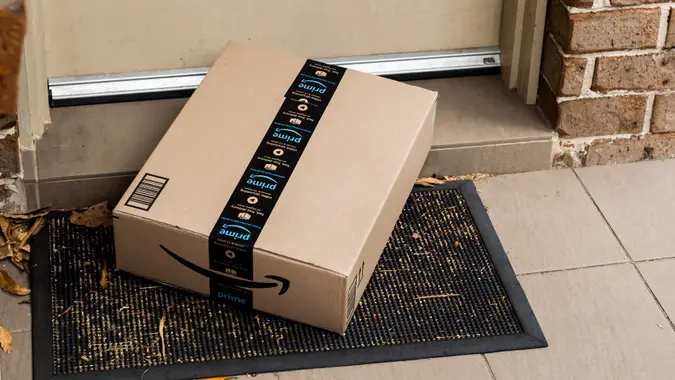10 Habits Frugal People Apply Every Time They Shop Online

Commitment to Our Readers
GOBankingRates' editorial team is committed to bringing you unbiased reviews and information. We use data-driven methodologies to evaluate financial products and services - our reviews and ratings are not influenced by advertisers. You can read more about our editorial guidelines and our products and services review methodology.

20 Years
Helping You Live Richer

Reviewed
by Experts

Trusted by
Millions of Readers
Online shopping has become a significant part of our lives, offering convenience and variety at our fingertips. However, with this ease comes the temptation to overspend.
Frugal individuals, known for their savvy spending habits, approach online shopping in a way that helps them save money and avoid unnecessary purchases. Here are the habits frugal people apply when shopping online and how you can copy them.
1. Set a Budget Beforehand
Before diving into the world of online shopping, frugal people set a budget. This involves determining how much they can afford to spend and strictly adhering to this limit. By having a clear financial boundary, they avoid the trap of impulsive buying and keep their finances in check.
2. Utilize Price Comparison Tools
One significant advantage of online shopping is the ability to compare prices across different platforms. Frugal shoppers make use of price comparison websites and apps to ensure they’re getting the best deal available. This habit can lead to significant savings, especially on higher-ticket items.
3. Seek Out Coupons and Discount Codes
Before finalizing any purchase, individuals who prioritize frugality search for coupons and discount codes. These can often be found on coupon websites, through newsletters, or as part of a loyalty program. Even a small percentage off can add up to substantial savings over time.
4. Join Loyalty Programs
Many online retailers offer loyalty programs that reward regular customers with points, discounts, or exclusive deals. Frugal shoppers sign up for these programs to enjoy these benefits, especially for stores where they shop frequently.
5. Abandon the Shopping Cart
A less known but effective tactic is cart abandonment. Frugal shoppers add items to their cart but don’t immediately check out. Retailers often send follow-up emails with discounts to encourage the completion of the purchase. This strategy can result in unexpected but welcome savings.
6. Embrace Cashback Opportunities
Many cashback websites and credit card companies offer cashback on purchases made at various online retailers. By using these services, frugal shoppers earn back a percentage of their spending, effectively reducing the overall cost of their purchases.
7. Buy Off-Season Items
Purchasing items out of season is a common strategy among frugal shoppers. For example, buying winter clothes in the summer or vice versa can lead to significant discounts as retailers clear out old stock.
8. Avoid Rush Shipping
Unless necessary, frugal individuals opt for standard shipping. Rush shipping often comes at a premium price, and by planning their purchases ahead of time, they can save on these additional costs.
9. Follow a List
Just like in-store shopping, creating a list and sticking to it is a vital habit. This discipline ensures that frugal shoppers only purchase what they need and do not fall prey to the allure of browsing and buying non-essentials.
10. Read Reviews and Ratings
To avoid the pitfall of buying low-quality items that need to be replaced, frugal shoppers read reviews and ratings thoroughly. This practice helps them make informed decisions, ensuring they spend their money on products that are worth it.
The Takeaway
By adopting the habits of frugal people, such as setting a budget, using price-comparison tools, seeking discounts, and being strategic about when and how to buy, you enjoy the convenience of online shopping without compromising your financial health. These habits will not only help you save money but also guide you toward making smart, informed choices.
Editor's note: This article was produced via automated technology and then fine-tuned and verified for accuracy by a member of GOBankingRates' editorial team.
 Written by
Written by 

























